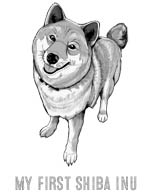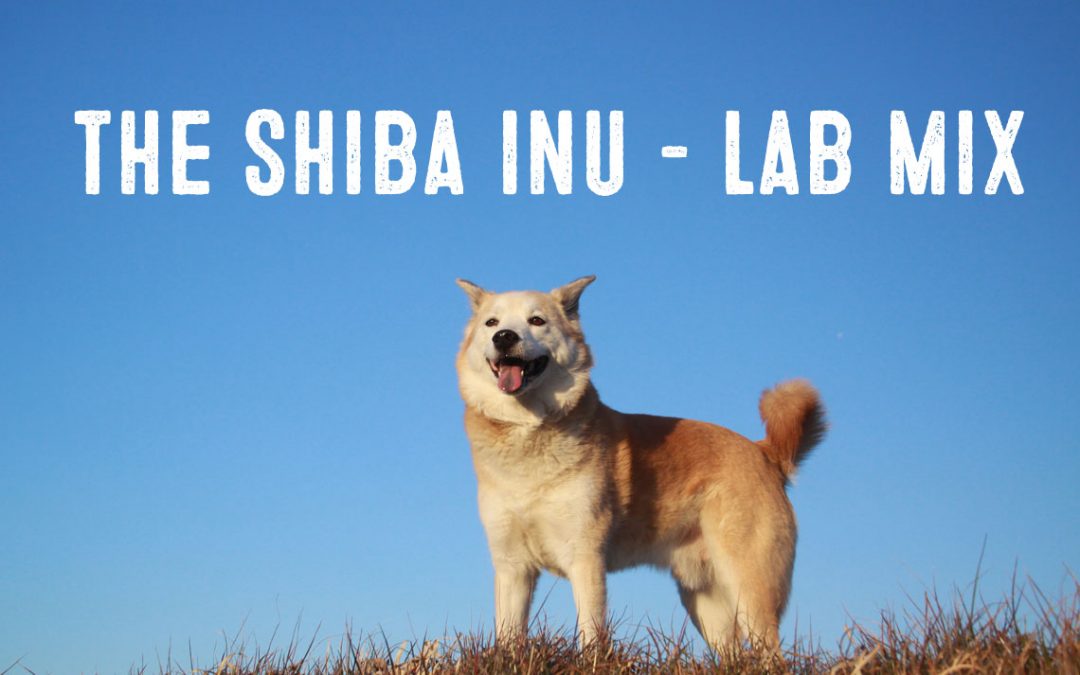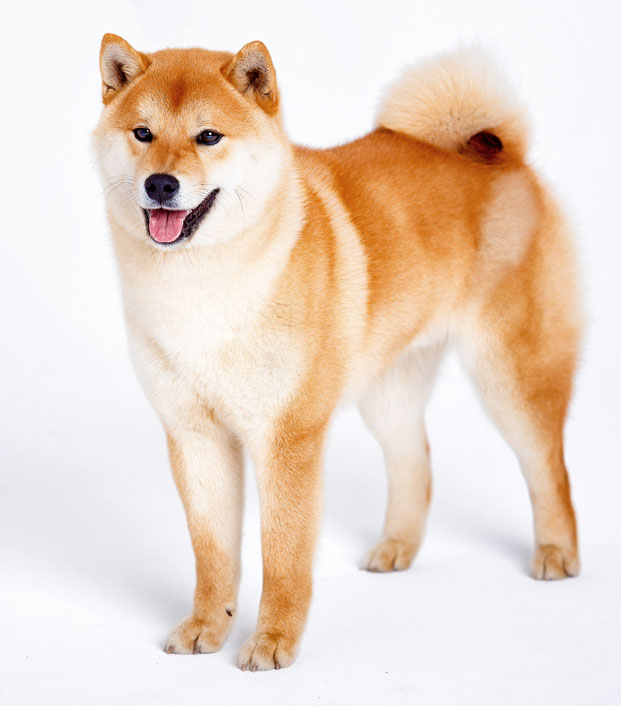Shiba Inu Labrador Retriever mixes, often known as a Shibadors, are friendly and active dogs with curious and intelligent minds.
Because of their smarts and athleticism, Shibadors can be a challenge to own.
They are best suited to families that can provide them plenty of exercise and mental stimulation.
Owning a Shibador can be a wonderful and rewarding experience as long as you are able to commit to their needs.
[tcb-script async=”” src=”//www.instagram.com/embed.js”][/tcb-script]
What’s The Personality of a Shiba Inu Lab Mix Like?
Labrador Retrievers and Shiba Inus share some temperamental traits but differ in several key ways. A Shibador may inherit any or all of the personality traits of both breeds.
Labradors and Shibas are both hunting breeds and enjoy the mental stimulation of having tasks or a “job” to do.
Shiba Inus are an ancient dog breed and were able to hunt and flush prey out of the bush with swift precision. Because they often had to think and act on their own, they have strongly independent natures.
Sometimes, this may be mistaken as stubbornness or aloofness when passed on to their puppies.
Left: Labrador Retriever, Right: Shiba Inu
Labrador Retrievers were bred to retrieve ducks and other prey during a hunt. While they are a more recently developed breed than Shiba Inus, their mouthing and retrieving instincts are strong and may be apparent in their offspring.
Labs are generally considered one of the friendliest breeds and revel in attention and praise.
Shiba Inus on the other hand, are almost polar opposites. Shibas do not enjoy excessive affection nor attention. They are also not generally friendly to strangers.
Because both parent breeds are hunting dogs, Shibadors should be introduced to other pets early. This may help prevent them from developing a strong prey drive.
It’s funny though, that many purebred Shiba Inus are known to get along well with cats despite this strong hunting and chase drive. This cute “phenomenon” is thought to be due to similarities in their personalities.
A Shibador may lean towards the personality of either a Shiba or a Labrador. Thus, they may be either aloof and independent or puppy-like and attentive to their humans.
Most Shibador dogs will be a mix of these two personalities.
Physical Characteristics of a Shiba Inu Lab Mix
Predicting the exact appearance of the offspring from two different breeds can be difficult. But there are some general features shared by many Shibadors.
They have thick coats of medium length fur and tend to be light tan and white or black and tan in color. Their ears may be upright, but the ears of most Shibadors will be floppy or partly erect.
In size, Shibadors will vary from dog to dog. Shiba Inus are typically less than 25 pounds while Labradors may weigh over 100 pounds.
Depending on the size of the parents, most Shibadors should weigh between 30 and 50 pounds although larger or smaller Shibadors are possible from this cross.
Shibador Health / Health Issues
Both Labradors and Shiba Inus are at risk for hip dysplasia, a deformity of the hip joint which can lead to crippling pain later in a dog’s life.
Both breeds are also prone to luxating patellas, a condition in which the kneecap may slide out of place when a dog walks or runs.
Cataracts and glaucoma are also infrequently inherited from these breeds.
Obesity is not necessarily an inherited condition, but it is one of the main health concerns for medium to large sized dogs. It’s especially a concern in lab mixes. Purebred Labs have enormous appetites and are not finicky when it comes to food.
However, given plenty of exercise and a high-quality diet, you should expect this to be a healthy cross overall, and a Shibador should have a live expectancy of between 10 and 15 years on average.
The Issues With Designer Dogs
While mixed breed dogs offer boundless love and companionship to their families, purposefully crossing two purebred dogs to create a designer breed is a controversial act.
The true physical appearance and personalities of the puppies are often unpredictable, especially when they are coming from puppy mills.
Sadly, this may result in dogs who are difficult to re-home and can lead to more of the puppies ending up in a shelter.
Moreover, the demand for designer dogs can lead to unscrupulous breeders taking advantage of the demand for puppies. Parent dogs that are genetically or mentally unfit are often bred together resulting in unstable puppies.
Mother dogs are often bred way too frequently which results in poor health. To avoid these problems, you should only consider puppies from reputable breeders or ideally, rescue organizations.
Should I Get a Shiba Inu Lab Mix?
Before you adopt any dog, you should consider your ability to provide for all of their needs. This not only means you should be able to financially care for a pet, but you must also be able to commit to caring for their mental and physical needs, too.
All dogs need plenty of attention and physical activity to keep them happy and fit, but Shibadors will need more stimulation than average.
Since their Shiba Inu ancestors were strong independent hunters, obedience training is of critical importance during pupphyood.
Training adult Shibadors may be more of a challenge, but nonetheless just as important.
Daily walks, trips to the dog park, and engaging outdoor games are also a must given the athletic nature of these dogs.
If you are active and enjoy outdoor activities like jogging, camping, and hiking, a Shiba Lab mix may be a worthy companion.
We here at My First Shiba will never recommend the “purchase” of any designer dogs or dogs from pet shops. We do however, always advocate for rescuing any dog in need.
If you want to get a Shibador or if you have adopted a dog that you suspect may be a Shiba Lab mix, research Shiba Inu dogs and Labrador Retrievers and learn as much as you can about each breed.
You must be confident that you can handle a dog who is more active and intelligent than average. But if you have the patience and energy, a Shibador may be a loyal and vibrant addition to your family.
http://www.akc.org/dog-breeds/shiba-inu/
http://www.shibas.org/newstand/geninfo.html
http://www.nytimes.com/2007/02/04/magazine/04dogs.t.html
http://www.akc.org/dog-breeds/labrador-retriever/care/






